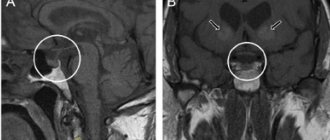What is the somatic health of an individual? This is the current state of the body and organs.
What is the somatic state of a person? These are certain indicators or elements of health. Here we are talking about the level and harmony of physical development, the functional state of the body, the level of immune defense and nonspecific resistance, and existing diseases or developmental defects.
This is a kind of energy potential of the body from the point of view of biology and medicine.
Assessment of physical (somatic) health
Professor Apanasenko G. A. believes that the level of somatic health can be measured by a simple, reliable and accessible method. The assessment is carried out in points. To do this, you need to determine some indicators:
- body weight;
- height;
- blood pressure;
- hand strength;
- heart rate;
- vital capacity of the lungs;
- the time it takes for the heart rate to recover after exercise.
This method helps to identify deviations from the norm in a timely manner. Somatic health is also determined by other indicators:
- experience in physical exercise;
- general endurance;
- strength endurance;
- dexterity;
- effectiveness of the immune system;
- maximum oxygen consumption;
- presence of chronic diseases.
Factors influencing the somatic condition
Any disturbances in the human body can be caused by:
- Psychological factors, mental disorders that affect how a somatic disease develops and proceeds.
- Mental disorders as a personality reaction to somatic illness.
- A mental disorder that results from physiological changes in somatic illnesses.
- Somatic manifestations obscure mental disorders (masked depression, hysteria).
- Psychosomatic diseases.
It is important to note the following. With various somatic diseases - severe, life-threatening - neurotic disorders are especially acute. For example, a stroke or heart attack, oncology or HIV infection, or illnesses leading to a defect in appearance can provoke depression. It is important for the relatives of such a person to pay attention to this in a timely manner and try to help him. You may need to see a psychologist or psychotherapist.
What does this mean: definition of concepts
What are somatic diseases?
Somatic diseases are various physical disorders that arise as a result of a psychological disorder or injury.
The appearance of such diseases is explained very simply: our body is a single mechanism, that is, if one element breaks down (in this case, the psyche), then this can affect other components (physiology).
A somatic state is a person’s feeling of immediate bodily well-being, the physical state of the body. That is, this is how we feel, how we feel our body, what processes we notice in it.
The concept of “somatic status” is mainly used when writing a medical history. This includes:
- general condition of the person, his height and weight;
- condition of the skin and mucous membranes;
- a brief description of the main human organs and systems (digestion, blood circulation, respiration, etc.).
The somatic status of a person greatly influences his functional capabilities. In himself, he collects and generalizes the diverse properties of a person.
Somatic dysfunction is a disruption or change in the functioning of any structures, leading to the appearance of various symptoms, including limited movement, sensitivity or pain.
Somatic irritation is a direct reaction of the human physical body to mental irritation.
Somatically healthy - what does this mean? Somatic health is physical health, reflecting the condition of the organs and systems of the body.
Thus, somatically healthy can be called a physically healthy person who does not feel and does not have any problems with the body.
“ICD 10” stands for “International Classification of Diseases, Tenth Revision.” It includes 21 sections reflecting human diseases and conditions.
Somatically healthy, according to ICD 10, a person who has no established diagnosis or complaints and has undergone a general examination (code Z00) can be considered.
Children
What is a healthy child? It has been noted that children are susceptible to a higher incidence than representatives of other age groups. They suffer from chronic pathologies. For example, this includes high or low blood pressure, chronic inflammatory processes in the upper respiratory tract, and diseases of the musculoskeletal system. Girls are affected more often than boys. Poor sleep and headaches are considered psychosomatic. The stress factor also plays a significant role here.
That is, a healthy child can only be in a healthy family with a normal psychological climate.
Somatic diseases
Research Disease Prevention
Prevention of somatic diseases and genetics. What do we know about this?
As a rule, most of us turn to a doctor for help either with the first appearance of symptoms of a physical illness, or, even worse, when a developing illness causes significant pain, decreased quality of life, and sometimes irreversible changes in health. And then your doctor has no choice but to prescribe for you an individual program of secondary prevention of the disease, which is aimed, sometimes for life, at preventing the progression of the disease and its complications.
The situation changes dramatically if you focus yourself on knowing all the personal risks of contracting a particular disease even before the first manifestations of the disease, in advance. Despite the fact that almost all of us know the postulate that it is easier to prevent a disease at a pre-symptomatic level than to treat it, not everyone realizes this in life.
It is not just those who have information about all possible risk factors for the disease who are well “armed” against diseases, but most importantly, they can competently use this information to maintain excellent health and longevity.
This is how a whole medical direction appeared - personalized preventive (precautionary) medicine, which in the 21st century is intended to become the basis of all medical prevention. What distinguishes it from the generally accepted concept of “medical prevention among the population” is that it deals with each specific person. And in essence, this is individual management of the health status and reserves of the body.
The basis for such prevention was laid by modern medical genetics, which discovered individual characteristics of human genomes (gene polymorphisms/unfavorable allelic variants of genes) that manifest themselves only in combination with exposure to pathogenic environmental factors. In other words, gene polymorphisms are a type of mutation in genes when a mutant gene, a predisposition gene, is compatible with birth and life, but under certain unfavorable conditions contributes to the development of a particular disease.
The study of these polymorphisms provides knowledge:
— what diseases a person is predisposed to, what are his personal risks of getting sick;
— what is his personal program for the prevention of those diseases to which a predisposition has been identified;
— what is the prognosis for the course of the disease if it develops, what is the prognosis for the development of its complications;
— how to competently and personalizedly treat a patient, providing him with medication, taking into account his individual drug response.
Somatic diseases (from the Greek - body) are almost all diseases, with the exception of mental illnesses and conditions. Somatic diseases: oncological, cardiovascular, bronchopulmonary, endocrine, diseases of the musculoskeletal system, gastrointestinal tract, organs of vision, hearing, nervous system, genitourinary system, etc.). As medical genetics developed, in relation to the listed diseases, the multifactorial risks of their occurrence were established, one of which is genetic predisposition. The second component is external pathogenic factors . This is the environment around us, what we eat, our bad habits, stress and much more.
The diseases themselves are called multifactorial diseases (MDDs). Despite all the diversity of the clinic, they are united by several common characteristics:
- all of them manifest themselves throughout a person’s life when there is a combined effect of unfavorable external factors and individual characteristics of the genome. This explains why, given equal conditions and lifestyle, some people suffer from the disease, while others do not develop it. When we talk about individual characteristics of the genome, we mean genetic predisposition;
- genetic predisposition to diseases is inherited, and this inheritance does not obey Mendel’s laws, as, for example, in the case of monogenic hereditary diseases;
- the genetic contribution is polygenic in nature , that is, not one, but several genes, dozens of genes, are involved. Moreover, the same gene can be involved in different MDs. Most MDs are related to each other by different genes, this proves the pathogenetic proximity of diseases such as cardiovascular diseases;
- the disease may or may not develop. It all depends on how harmful and harmful environmental factors are eliminated and what the proportion of the contribution of the genetic predisposition factor is (for example, in the case of type I diabetes mellitus, the genetic contribution reaches 60%).
Teenagers
The All-Russian medical examination of children (2002) allowed us to draw the following conclusions. In the system of somatic diseases of adolescents from 15 to 17 years old, changes are observed: diseases of the endocrine system, neoplasms progress, infectious and parasitic diseases, and pathologies in the genitourinary system are observed. Somatic health is clearly suffering.
It is special in adolescents, and it is determined by two fundamental processes that occur during the transition period. The latter is characterized by a pubertal restructuring of the regulatory structure, which ensures physical, sexual and psychosexual development, on the one hand, and enters the final stage of psychosocial development, on the other.
Diseases of adolescents in structural characteristics
What diseases are most often of a somatic nature?
- Diseases that have a nosological form are common to age groups (let’s take anemia and pneumonia as examples).
- Diseases characteristic of puberty (for example, a disorder of bilirubin metabolism called Gilbert's syndrome, osteochondropathy, hypothalamic syndrome during puberty, enlarged thyroid gland).
- Characteristic of the developmental phase in life are “behavioral diseases” (increased trauma, STDs or diseases transmitted as a result of unprotected sex, use of alcohol, drugs, etc.).
- The list of rare diseases includes hypertension.
This is how the somatic health of a child suffers during adolescence.
What suffers most often?
In this large system, we can identify the basis - a disorder of the endocrine system, pathologies of the central nervous system and the fact of dysplasia (muscle weakness). In this case, it would be reasonable to correct the underlying pathologies rather than treat differentially the disorders.
When analyzing the health status of an individual teenager, it is important to identify and assess the interdependence of different components of health (somatic, reproductive, mental, social components). In this case, prevention and treatment will be optimal and effective. In this case, a “convex” example would be the diagnosis of anorexia nervosa. A symptom such as cessation of menstruation may be a reason to contact a specialist.
Symptoms and signs
The most common somatic symptoms are:
- Insomnia . Many people do not consider this a big problem and do not consider it a symptom. In addition, most people try to cope with it on their own, without turning to specialists for help. As a result, they buy sleeping pills (the most advertised ones or on the recommendation of friends) and use them uncontrollably. And they don’t even realize that this is the same somatic symptom and it must be treated in a complex manner.
- Problems with appetite (decreased to the point of complete refusal to eat or increased in the form of overeating). This leads to either anorexia/bulimia or obesity. All this can act as a symptom of a somatic disease, which will result in complications with the functioning of the digestive process.
- Sexual disorders .
They arise most often due to unhealthy self-esteem, fears, disgust towards a partner or prolonged abstinence. In men, this symptom can be expressed in decreased libido or problems with erection. As for women, the symptom manifests itself in the form of pain during sex or (most common) in the form of a lack of orgasm. - Painful sensations. This symptom usually develops in sensitive people, suspicious and easily susceptible to anxiety. In this case, pain can occur in absolutely any organ, but, as a rule, this is the place that a person has the weakest (for example, an operation was previously performed on it or there is a possibility of getting a hereditary disease).
Children are also susceptible to somatic diseases .
So, there is a somatic weakening of the child - this is the name of neuropathy, which creates some difficulties in the process of development of the child, both emotional and psychophysical.
At the same time, in childhood, somatic diseases, as a rule, have the following symptoms :
- high sensitivity to various types of infections;
- emotional instability (sudden mood swings, frequent whims and hysterics, etc.);
- predisposition to allergies;
- dependence of mood or well-being on weather conditions;
- weak immunity, decreased body defenses;
- the presence of tics, stuttering or other psychomotor disorders.
The classification of psychosomatic disorders is presented here.
What somatic diseases are caused by poor nutrition of a child? Find out from the video:
Adults
Mature people react more adequately to illness. But older people become hypochondriacs and more often suffer from phobias and depression. They listen to their feelings and become scrupulous in matters of health. But this doesn't always happen. It all depends on the individual characteristics of the individual.
We looked at somatic health. It is necessary to carefully monitor him, visit doctors in a timely manner and undergo a comprehensive examination.
Senestopathies
Unpleasant and sometimes even painful sensations that have no physiological support are called senesthopathy. As a rule, they begin to appear if the patient has mental disorders or is depressed.
Attention! People make good money growing berries during a crisis. All information is here
Attention! The first examination of the patient will most likely not reveal any violations or failures
However, senestopathies cause great discomfort to a person, and sometimes can intensify the manifestations of mental illness. Somatic diseases are quite complex physical conditions of the human body. It should be noted that only psychiatrists treat this condition. Senestopathies are divided into several types:
- feeling of cold, chills and other thermal conditions;
- it seems that the whole body is in tension;
- pulsation and other gurgling-like fluids;
- burning pain;
- withdrawal
Attention! Senestopathies have distinct features in which the patient is unable to describe his physical condition
In addition, the condition is determined by the inability of a person to concentrate on anything, since all his thoughts are occupied with his own sensations. Basically, these strange conditions occur in the head or chest, less often in the stomach. But it is almost impossible to find senestopathy in the arms and legs.








